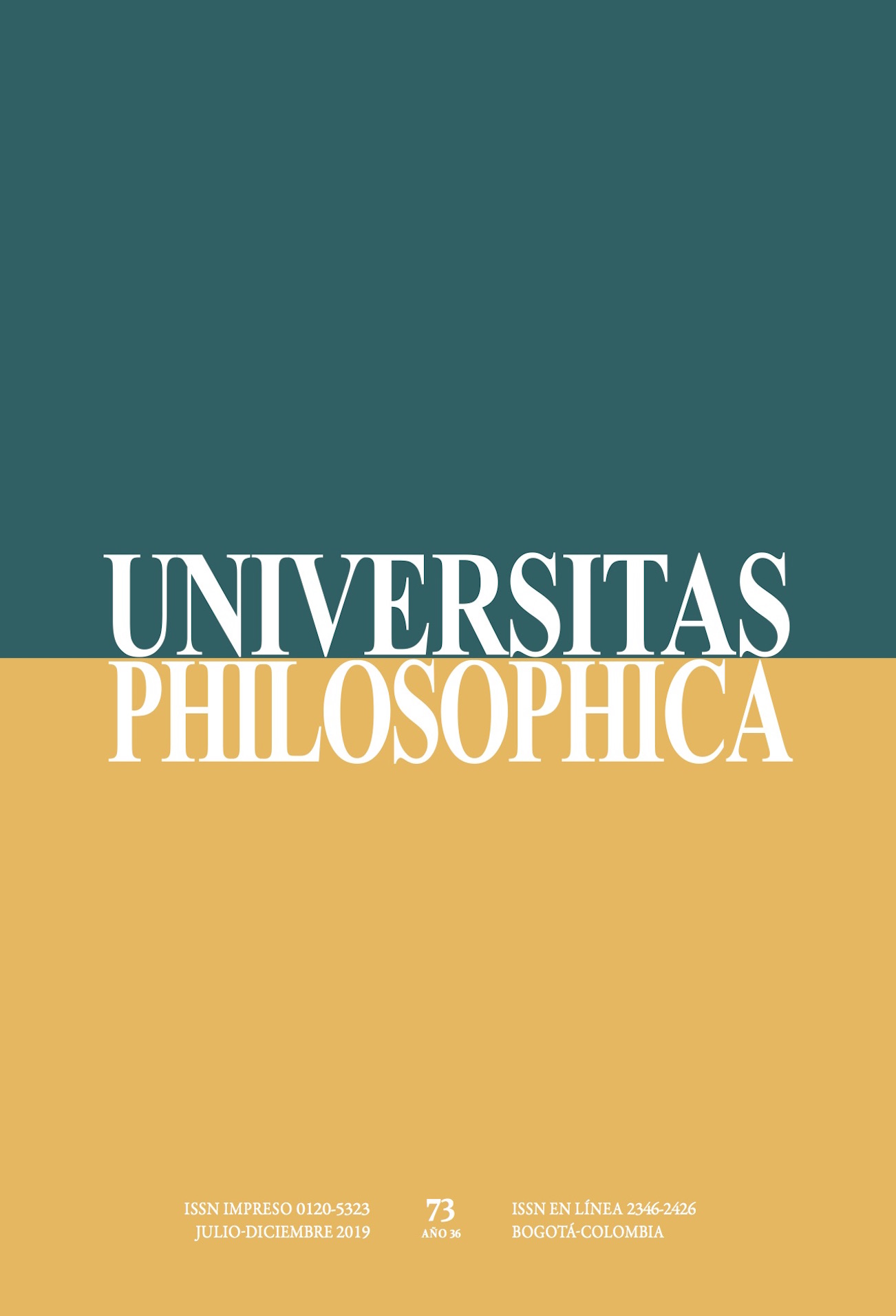Resumen
Este ensayo sostiene que la estructura general de las Leyes de Platón obedece al principio de acceso indirecto al conocimiento del alma humana, que consiste en la comprensión de que la aproximación filosófica al alma solo es posible inicialmente a través de una imagen de ella. El decurso de las Leyes puede interpretarse como un movimiento hacia la interioridad del alma a partir de la famosa imagen de la marioneta, de acuerdo con la cual se comienza por analizar los elementos no-racionales del alma, capaces de conformarse en armonía con el elemento racional, y se avanza poco a poco hacia el elemento racional o epistémico. Solo al final del diálogo, con la fundación del Consejo Divino, aparece la necesidad política de emprender la investigación dialéctica para alcanzar un conocimiento filosófico del alma humana y de su excelencia específica. De este modo, el diálogo dramatiza el progresivo nacimiento de la filosofía, entendida como investigación dialéctica de la unidad de la virtud, a partir de la comprensión inicial del alma humana contenida en el mito de la marioneta.
Altman, W. (2012). Plato the Teacher: The Crisis of the Republic. Plymouth: Lexington Books. doi: 10.1111/1467-9752.12099
Benardete, S. (1999). Socrates and Plato: the Dialectics of Eros. München: Carl Friedrich von Siemens Stiftung.
Benardete, S. (2000). Plato’s Laws. The Discovery of Being. Chicago: University of Chicago Press.
Brisson, L. & J. F. Pradeau (2006). Notes. En: Platon. Les Lois, Livres I à VI. (Trad. L. Brisson & J. F. Pradeau). Paris: Flammarion.
Flórez, A. (2012). El río torrencial de los argumentos: una lectura fenomenológico-hermenéutica de Leyes X de Platón. Manuscrito inédito.
Folch, M. (2015). The City and the Stage: Performance, Genre, and Gender in Plato’s Laws. Oxford: Oxford University Press. doi: 10.1093/acprof:oso/9780190266172.001.0001
Fossheim, H. (2013). The Prooimia, Types of Motivation, and Moral Psychology. En: C. Horn (Comp.), Platon: Gesetze - Nomoi (pp. 87-104). Sankt Agustin: Akademia Verlag. doi: 10.1524/9783050064482.87
Frede, D. (2010). Puppets on Strings: Moral Psychology in Laws Books 1 and 2. En: C. Bobonich (Ed.), Plato’s Laws: A Critical Guide (pp. 108-126). Cambridge: Cambridge University Press. doi: 10.1017/CBO9780511781483.007
Jorgenson, C. (2018). The Embodied Soul in Plato’s Later Thought. Cambridge: Cambridge University Press. doi: doi.org/10.1017/9781316795651
Klosko, G. (2006). The Development of Plato’s Political Theory. Oxford: Oxford University Press.
Kurke, L. (2013). Imagining Chorality: Wonder, Plato’s Puppets, and Moving Statues. En: A. Peponi (Ed.), Performance and Culture in Plato’s Laws (pp. 123-160). Cambridge: Cambridge University Press. doi: 10.1017/CBO9781139061674
Lin, Z. (2016). The Myth of the Soul in Plato’s Laws. En: R. Benítez & K. Wang (Eds.), Reflections on Plato’s Poetics (pp. 191-202). Berrima: Academic Printing and Publishing.
Massetti, L. (2013/2014). Gr. ἀρετή, ved. ṛtá-, av. aša- e l’eccellenza come ordine aggiustato. Münchener Studien zur Sprachwissenschaft, 67(2), 123-148.
Mayhew, R. (2008). Introduction. En: Plato. Laws 10 (pp. 1-11). (Trad. R. Mayhew). Oxford: Clarendon Plato Series.
Platón (1987). Diálogos II: Gorgias, Menéxeno, Eutidemo, Menón, Crátilo. (Trad. J. Calonge, E. Acosta, F. Olivieri & J. Calvo). Madrid: Gredos.
Platón (1988). Diálogos IV: República. (Trad. C. Eggers Lan). Madrid: Gredos.
Platón (1992). Diálogos VI: Filebo, Timeo, Critias. (Trad. M. Ángeles Durán y F. Lisi). Madrid: Gredos.
Platón (1999). Las Leyes. (Trad. J. Pabón & M. Fernández Galiano). Madrid: Centro de Estudios Políticos y Constitucionales.
Platón (2008). Diálogos III: Fedón, Banquete, Fedro. (Trad. C. García Gual, E. Lledó Íñigo & M. Martínez Hernández). Madrid: Gredos.
Prauscello, L. (2013). Choral Persuasions in Plato’s Laws. En: R. Gagné & M. Govers Hopman (Eds.), Choral Meditations in Greek Tragedy (pp. 257-277). Cambridge: Cambridge University Press.
Russon, J. (2013). Education in Plato’s Laws. G. Recco & E. Sanday (Eds.), Plato’s Laws: Force and Truth in Politics (pp. 60-74). Indianapolis: Indiana University Press.
Sassi, M. (2008). The Self, the Soul and the Individual in the city of the Laws. B. Inwood (Ed.), Oxford Studies in Ancient Philosophy, Volume XXXV (pp. 125-148). Oxford: Oxford University Press.
Sauvé-Meyer, S. (2015). Commentary. En: Plato. Laws 1 and 2 (pp 77-340). (Trad. S. Sauvé-Meyer). Oxford: Clarendon Plato Series.
Schöpsdau, K. (2011). Kommentar. En: Platon. Nomoi (Gesetze), Buch VII-XII (pp. 161-606). (Trad. K. Schöpsdau). Götingen: Vandenhoeck & Ruprecht.
Velásquez, O. (2013). Introducción. En: Platón. Alcibíades (pp. 11-49). (Trad. O. Velásquez). Santiago de Chile: Ediciones Tácitas.
Vergara, F. (1988). La Paideia Griega. Universitas Philosophica, 6(11-12), 153-168.
Voegelin, E. (2000). The Laws. En: D. Germino (Ed.), Order and History, Volume III: Plato and Aristotle (pp. 269-324). Columbia: University of Missouri Press.
Zuckert, C. (2009). Plato’s Philosophers: The Coherence of the Dialogues. Chicago: University of Chicago Press.

Esta obra está bajo una licencia internacional Creative Commons Atribución 4.0.
Derechos de autor 2019 Diego Alejandro García Rincón



